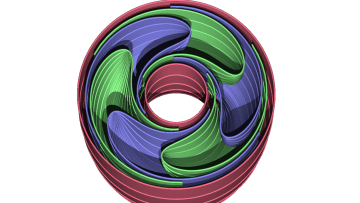Talks by graduate students
Abstract
Donovan Platt
-------------
Economic Agent-Based Model Calibration
Interest in agent-based models of financial markets and the wider economy has increased consistently over the last few decades, in no small part due to their ability to reproduce a number of empirically-observed stylised facts that are not easily recovered by more traditional modelling approaches. Nevertheless, the agent-based modelling paradigm faces mounting criticism, focused particularly on the rigour of current validation and calibration practices, most of which remain qualitative and stylised fact-driven. While the literature on quantitative and data-driven approaches has seen significant expansion in recent years, most studies have focused on the introduction of new calibration methods that are neither benchmarked against existing alternatives nor rigorously tested in terms of the quality of the estimates they produce. We therefore compare a number of prominent ABM calibration methods, both established and novel, through a series of computational experiments in an attempt to determine the respective strengths and weaknesses of each approach and the overall quality of the resultant parameter estimates. We find that Bayesian estimation, though less popular in the literature, consistently outperforms frequentist, objective function-based approaches and results in reasonable parameter estimates in many contexts. Despite this, we also find that agent-based model calibration techniques require further development in order to definitively calibrate large-scale models.
Yufei Zhang
-----------
A penalty scheme and policy iteration for stochastic hybrid control problems with nonlinear expectations
We propose a penalty method for mixed optimal stopping and control problems where the objective is evaluated
by a nonlinear expectation. The solution and free boundary of an associated HJB variational inequality are constructed from a sequence
of penalized equations, for which the penalization error is estimated. The penalized equation is then discretized by a class of semi-implicit
monotone approximations. We further propose an efficient iterative algorithm with local superlinear convergence for solving the discrete
equation. Numerical experiments are presented for an optimal investment problem under ambiguity to demonstrate the effectiveness of
the new schemes. Finally, we extend the penalty schemes to solve stochastic hybrid control problems involving impulse controls.







